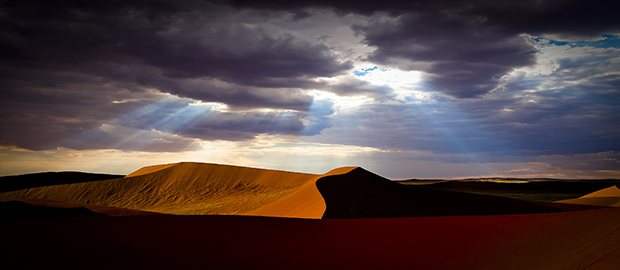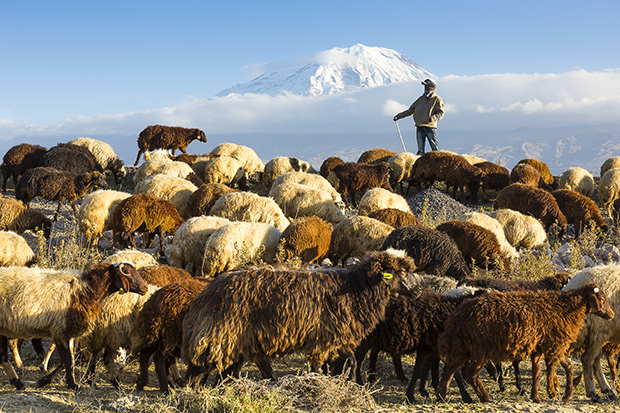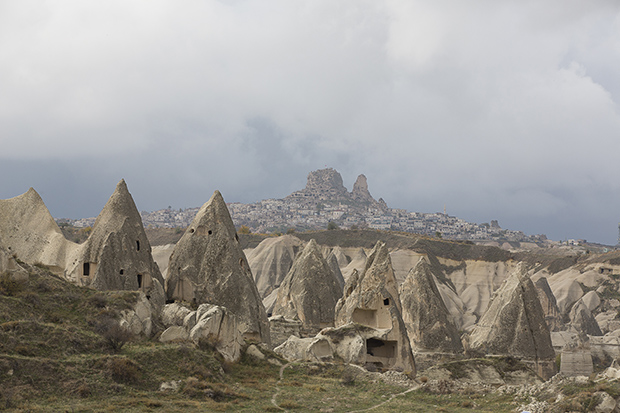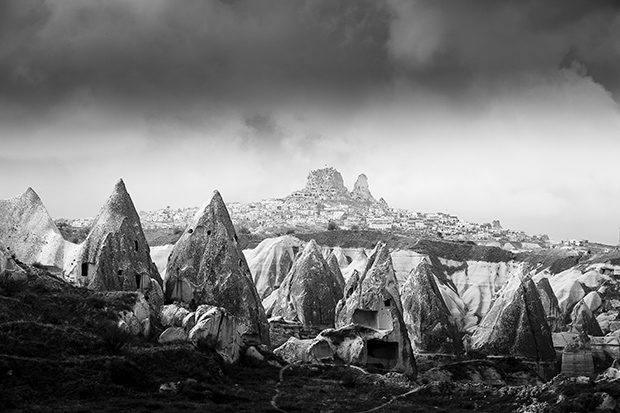In the first of a new two-part feature, photographer Darran Leal asks what it is to be a creative photographer and shares some clever tips to help you improve your eye and boost your creativity.
What does photography mean to you? Is it simply a means to record the world around you or is it something more? Photography can be as functional or as creative as you want to make it. There are myriad ways to approach each scene and that’s what makes photography so special. You might choose to capture a scene over several hours or in a fraction of a second. You can zoom in, zoom out, convert to black & white, paint with light and on and on the options go.
At its core, photography is a creative pusuit. The challenge, if you hope to improve as a photographer, is to undertand and embrace your own creativity and find a way to express that through your photography. There’s no quick fix to help you become more creative over night, but there are some things you can do to get the process started. The following are my tips to help you take your creative skills to a higher level of proficiency.
What is creative photography?
A key starting point in your development is to understand that photography is a creative art form and creativity has no boundaries. As you learn more about photography there will be no shortage of people to tell you what you can and can’t do with a camera – feel free to nod politely and ignore everything they say! Imagine, create, experiment and find your own path. Keep practising and stretching your own photographic boundaries.
Understanding the basics
In an ideal world we wouldn’t need to know about things like aperture, shutter speed, ISO, lighting ratios and all that other technical stuff. But there’s no way around it; the truth is, knowing what you can achieve technically will help you get to where you want to go creatively. If you are new to photography, the first thing you need to understand is the triangle of exposure – aperture, shutter speed and ISO – and how each of these variables work together to not only determine the exposure, but also the way the camera renders depth-of-field, movement and noise. While the technical aspects of photography are important, remember they’re just a means to a creative end. It’s better to have great ideas and average technical skills, than to be a technical genius thin on creativity. If you’ve got good ideas, you can always get someone to help you solve the technical issues. It doesn’t work the other way around!
A 'standard' tour in Morocco suddenly got very exciting when I spotted this opportunity. The key here was to visualise what the scene needed as an 'extra'. I thought it needed a person to help with scale. 16-35mm lens @ 16mm, f/5.6 @ 1/90s, EV + 1, ISO 1600, hand held. Processed in Adobe Lightroom. Photo by Darran Leal.
Personal projects
A great way to improve your creativity is to concentrate on one idea and keep working on it. Set yourself a personal project to document something in your local community. Say you decide to photograph the closure of a local nursing home. Before you take your camera out think about how you will approach the project. What images will you take to tell the story? Can you photograph the residents, their families and the staff? What about the building itself, can you shoot it before and after the closure? How will the photos be lit? Will they be treated in any special way in post production? What about the format of the photos – will you shoot horizontal, vertical or square? The key here is visualisation. Personal projects can help focus your creative interests. Visualisation works on individual images, but it will also work on overall ideas. If you come up with a project, make sure it’s within your current capabilities. It’s unrealistic to decide you’re going to photograph Olympic skiing when you don’t have the skills, and can’t even get a media pass to a highly restricted Winter Olympics! But it’s not impossible, if you have an interest in the sport, to make contact with local skiers and head up to the ski fields one winter. Ultimately, that could lead to the Winter Olympics. But you have to be realistic, and do some ground work. That all starts with personal projects and clear visualisation.
I very rarely 'Photoshop' a landscape scene, but occasionally I like to use this creative option. I shot two images of the sand dunes to start. Then I turned 90 degrees to shoot the sky as a third image. The sand dunes were stitched together in Photoshop and the sky blended into the scene. In Lightroom I finished processing, darkening some parts of the scene for a more dramatic look. Photo by Darran Leal.
Get inspired
While it’s important to find your own style, part of that process is familiarising yourself with the works of other photographers. Trawl the internet, magazines and photography bookshops for inspiration. What images catch your eye? Why do you think they work? Analyse the composition, lighting and emotional content of the photo? What aspects could you incorporate in your own work? While new photographers may start out mimicking other photographers’ styles, keeping an open mind and following your own creative path will often springboard you into something more personal and unique to you.
 I spotted this opportunity from our bus while driving near Mt Ararat in Turkey. I asked our driver to pull over, ahead of the flock. The group piled out ready to shoot. Initially everyone was thinking that no shot was available as an obvious road marred the scene. But the sheep moved forward and a scene developed. Visualisation is such an important facet to creative photography. Processed in Adobe Lightroom, 24-105mm lens @ 57mm, f/11 @ 1/250s, ISO 400, hand held. Photo by Darran Leal.
I spotted this opportunity from our bus while driving near Mt Ararat in Turkey. I asked our driver to pull over, ahead of the flock. The group piled out ready to shoot. Initially everyone was thinking that no shot was available as an obvious road marred the scene. But the sheep moved forward and a scene developed. Visualisation is such an important facet to creative photography. Processed in Adobe Lightroom, 24-105mm lens @ 57mm, f/11 @ 1/250s, ISO 400, hand held. Photo by Darran Leal.
Five Tips To Improve Your Creativity
01. Visualise the result. The most creative photographers are those who can visualise a result before they shoot and then apply simple techniques for a great result. Keep it simple!
02. Don’t shoot everything. Instead, look for unique subjects within a scene or subject. It might be a leaf with water running around it, rather than an entire creek or forest. At a beach, it might be a shell, with slow-moving ocean as a backdrop. Take your time and move around to find a unique angle.
03. Use your experience and technical knowledge to try new concepts. Don’t be shy to try something new, even if it doesn’t work initially. Perhaps your creative image will look even better with a few subtle processing tweaks?
04. Look for line, form, shape and contrast. These four basic elements combined, by themselves, or as opposites, can offer very different creative results.
05. Slow shutter speeds can be helpful. Use low ISO settings like 50 or 100, a polarising filter (which absorbs 2 stops of light), or better still a Neutral Density filter. My favourite is the Hoya ND400. (9 stops)

 Cappadocia is an unusual location in Turkey. I wanted to emphasise the weird landforms in black & white, but I also timed fantastic weather to add to the creative result. 70-200mm lens @ 140mm, f/11 @ 1/500s, ISO 400, hand held. Processed in Adobe Lightroom. Photo by Darran Leal.
Cappadocia is an unusual location in Turkey. I wanted to emphasise the weird landforms in black & white, but I also timed fantastic weather to add to the creative result. 70-200mm lens @ 140mm, f/11 @ 1/500s, ISO 400, hand held. Processed in Adobe Lightroom. Photo by Darran Leal.












